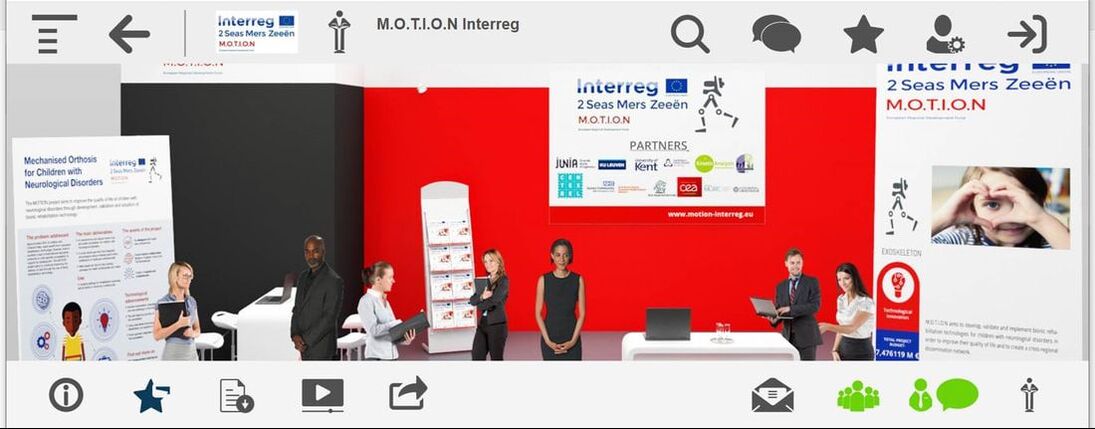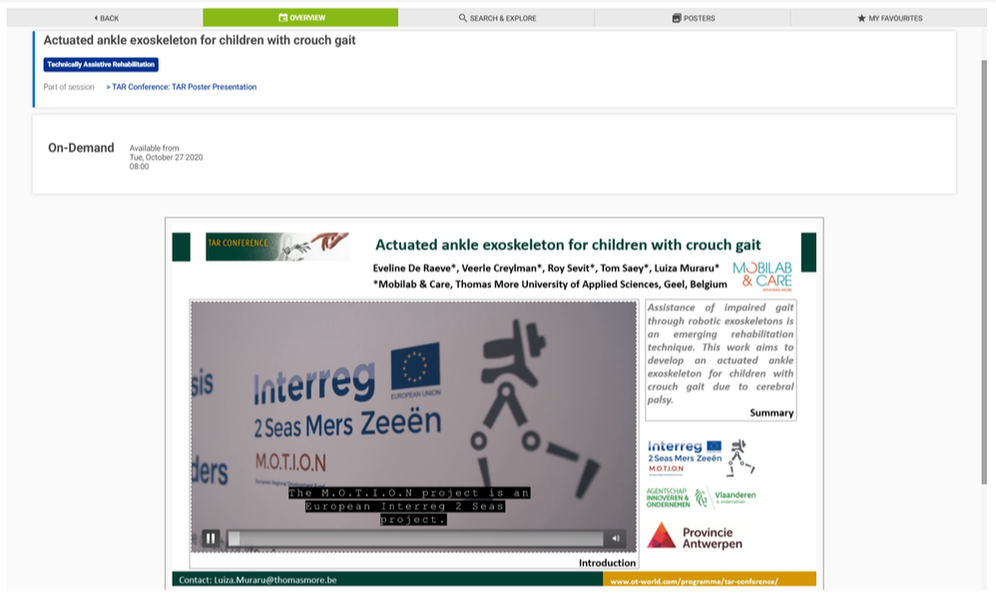|
Everaert, L. et al. (2023) The influence of ankle-foot orthoses on gait pathology in children with cerebral palsy: A retrospective study, Gait and Posture.
Hunt, M. et al. (2021) Effectiveness of robotic exoskeletons for improving gait in children with cerebral palsy: A systematic review, Gait & Posture. De Groof, S. et al. (2022) Design of a Series Elastic Actuator for an Assistive Exoskeleton using Numerical Methods and Gait Data, ACTUATOR 2022. Kolaghassi, R., Al-Hares, M. K. and Sirlantzis, K. (2021) Systematic Review of Intelligent Algorithms in Gait Analysis and Prediction for Lower Limb Robotic Systems, IEEE Access Kolaghassi, R., Marcelli, G. and Sirlantzis, K. (2023) Deep Learning Models for Stable Gait Prediction Applied to Exoskeleton Reference Trajectories for Children with Cerebral Palsy, IEEE Access. Saey, T. et al. (2021) A digital workflow for personalized design of the interface parts integrated in a powered ankle foot orthosis (PAFO), IEEE Engineering in Medicine and Biology Society. Annual International Conference, 2021, pp. 4840–4843. Zhang, Y. et al. (2020) Mechanical Design of an Exoskeleton with Joint-Aligning Mechanism for Children with Cerebral Palsy, Proceedings of the IEEE RAS and EMBS International Conference on Biomedical Robotics and Biomechatronics, 2020-November, pp. 106–111. Zhang, Y. et al. (2023) Design and Control of a Size-Adjustable Pediatric Lower-Limb Exoskeleton Based on Weight Shift, IEEE Access. Do you want to see the exoskeleton prototypes developed and tested during MOTION project? Do you want to meet the people behind the scene? Joins us at the CLOSURE CONFERENCE (hybrid event) 👇 On the 29th September 2020, the UK National Advisory Board meeting was hosted by Canterbury Christ Church University (CCCU). Advisory Board members include NHS consultants, orthopaedic surgeons, physiotherapists, health system experts and occupational therapists. The CCCU MOTION project team gave a general overview of the MOTION project. This was followed by a presentation about the assessment of training needs of professionals, parents and carers in the use of bionic rehabilitation, and a presentation about the exoskeleton prototypes and plans for testing. Advisory Board members gave valuable recommendations, including considerations for cyber security in medical devices and suggestions for our robotic exoskeleton feasibility studies. Furthermore, advisory board members agreed to disseminate the MOTION project Online Survey of Health Care Professionals with their contacts. The next meeting will take place in spring 2021 and will be hosted by Chailey Clinical Services, Sussex Community NHS Foundation Trust.
On January 27th the (online) Dutch National Advisory Board Meeting has been successfully organized by the Sint Maartenskliniek. Participants had experience in various relevant aspects for the MOTION project, including the development and clinical evaluation of gait robots and exoskeletons, gait analysis and medical care of children with cerebral palsy and gait data analysis. The Dutch MOTION partners (Sint Maartenskliniek and Kinetic Analysis) gave a general overview of the MOTION project with short presentations about the purpose and status of the different technical devices developed in the MOTION project. Fruitful discussions occurred about clinical relevance and technical challenges. Participants had valuable advice and indicated pitfalls in the development and testing of the device.
MOTION team from Thomas More attended TAR 2020 @OTWorld connect 2020 with an eposter about the ankle exoskeleton.
We were delighted to welcome the UK partners of the European MOTION project to Chailey Clinical Services on Tuesday 4th of February. The partners from University of Kent, University of Greenwich, University of Canterbury and the Academic Health Sciences Network for Kent, Surrey & Sussex were given a presentation from Highly Specialist Paediatric Physiotherapist, Victoria Brant about the residential and community services provided for children and young adults at Chailey Clinical Services and Chailey Heritage, followed by a tour of the facilities. This unique centre specialises in services for children with complex physical disability and over the last 20 years key research has taken place around postural management, powered mobility and sleep disorders in children with cerebral palsy. The MOTION UK partners reported that it was helpful to see how Chailey can support the clinical trial part of the project involving children with Cerebral Palsy and their carers and better understand how the services/partners will work together.
All 15 project partners from Belgium, France, The Netherlands and United Kingdom gathered at Mobilab & Care, Thomas More Kempen on 24th October 2019 and at Pulderbos on 25th October 2019, for two-days consortium meeting.  The first day was about evaluating the progress of various project tasks, technical concepts and current developments of the lower limb exoskeleton prototype and of the ankle exoskeleton prototype, sensing technologies to be integrated in the smart garment, strategies for the near future and long-term activities and project management. In the second day we learnt about the clinical environment, the daily life of the children in the rehabilitation center, the challenges they are confronted with and their joy by completing the rehabilitation exercises. The M.O.T.I.O.N project participates at the 17th World Congress of the International Society for Prosthetics and Orthotics with a poster exhibition at International Community Lounge.
“Basics to Bionics” is the theme of the World Congress this year. “Basics to Bionics” refers to the large spectrum of the rehabilitation field and assistive technology, including traditional rehabilitation approaches and more complex interactions between humans and machines (rehabilitation robotics), while embracing the relevance and importance of both basic and emerging technologies. For the M.O.T.I.O.N project, this was a great opportunity to actively promote the project amongst the participants at the event, inform them about latest developments in the field of assistive technology and rehabilitation robotics, and extend the network of stakeholders. The M.O.T.I.O.N project was presented at the PRIMOH workshop on rehabilitation robotics. |





 RSS Feed
RSS Feed






